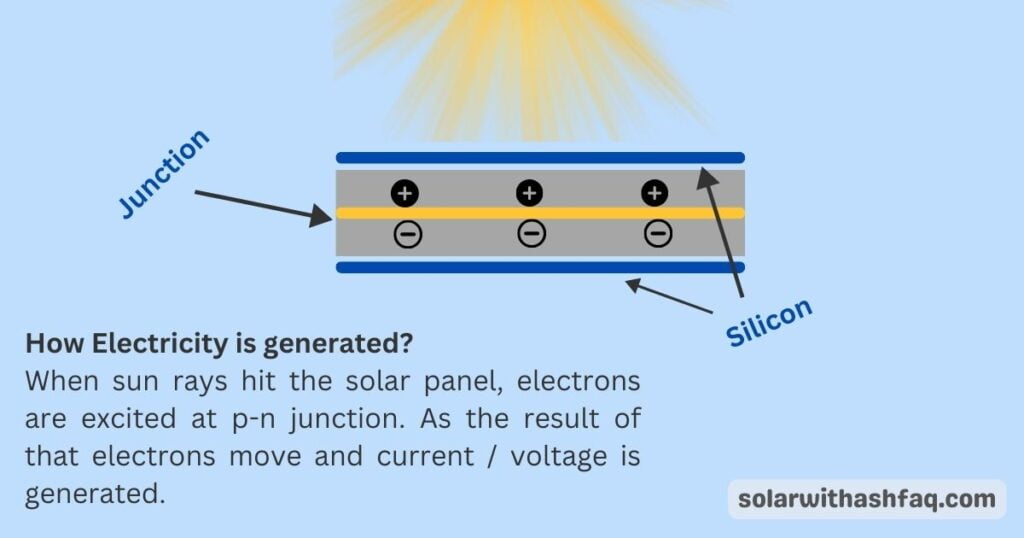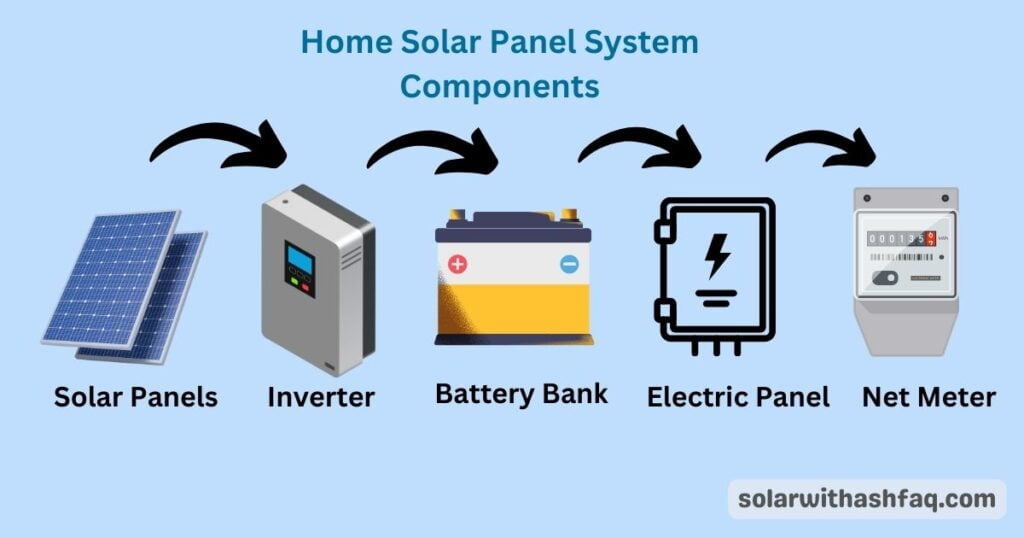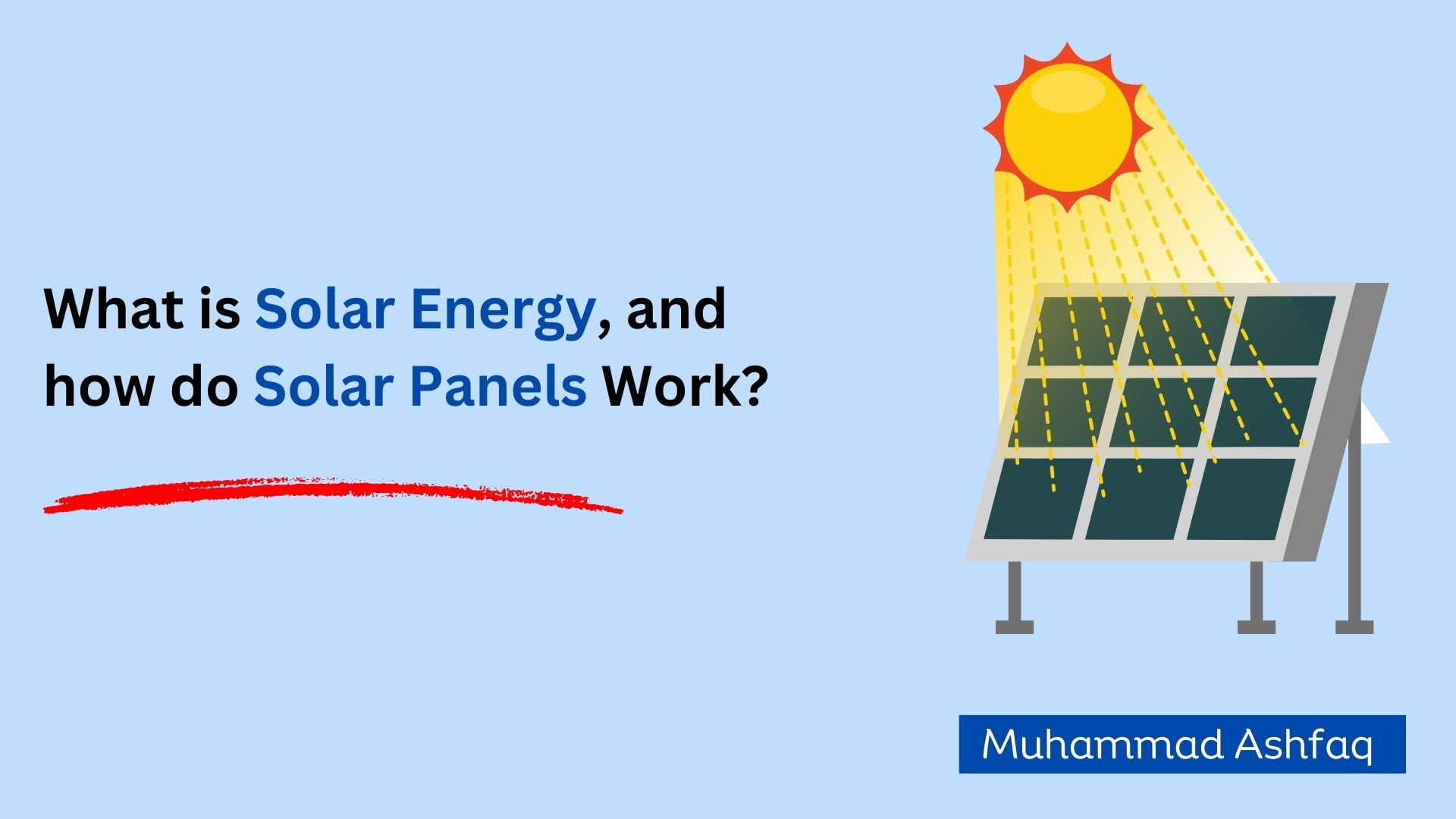What is Solar Energy, and How do Solar Panels Work?
Solar power is gaining a lot of attention in Pakistan nowadays. Have you ever wondered how this technology works? The science behind it is pretty simple.
In this text, we’ll discuss what is solar energy and solar panels work—and the components of a complete home solar system.
Understanding this process will enhance your knowledge and highlight the importance of solar energy, particularly in countries like Pakistan, where we’re blessed with abundant sunshine.
What is Solar Energy, and Why is it Important?
Solar energy is the cleanest and most abundant renewable energy source available. According to the US Department of Energy, 173,000 terawatts of solar energy strike the earth continuously – more than 10,000 times the world’s total energy use.
And here in Pakistan, we’re blessed with an annual average sunshine duration of 8 hours per day, with some regions like Bahawalpur seeing up to 9.3 hours per day.
Besides this, solar power is a clean, renewable source of power that can help reduce our reliance on imported fossil fuels (the white elephant for our economy). It is worth noting that Pakistan is one of the countries most vulnerable to the effects of climate change.
How Do Solar Panels Convert Sunlight into Electricity?
As a homeowner, you’ve surely heard about solar panels and the benefits they offer to our wallets and the environment. But how do those solar panels on your roof convert the sun’s rays into usable electricity for your home?
Let me simplify it for you.
Solar panels are made up of photovoltaic cells composed of semiconductor materials (usually silicon). When sunlight hits the solar panels, it excites the electrons in the semiconductor materials within the solar cells. This frees the electrons from their atoms, allowing them to flow through the cell and generate an electrical current.

Think of electrons absorbing the sun’s energy, becoming independent from their atoms, and starting to move (moving electrons means electric current).
This is known as the “photovoltaic effect.” The free electrons then flow through the material to the external wires. Multiple solar cells are wired together to form a solar panel, and multiple panels make up a solar array.
Solar fact
This process is not only efficient but also environmentally friendly. There are no moving parts, no fuel being burned – just the clean without any harmful emissions.
How a Complete Home Solar System Works? Step-by-Step Explanation
Solar Panels: The Heart of Your System
Solar panels are the foundation for your entire home solar setup. These panels are installed on your rooftop and use photovoltaic technology to convert sunlight into clean, renewable electricity (as described above). When the sun hits the panels, it generates direct current (DC).
Inverter: Turning Electricity into Usable Power
Once your solar panels have generated that electrical current, it’s time to transform it into a form your home can actually use. That’s where the inverter comes in. This crucial component takes the direct current (DC) from your panels and converts it into the alternating current (AC) that powers your home’s lights, appliances, and everything else.
What is DC and AC?
When it comes to electricity, there are two main types—direct current (DC) and alternating current (AC). Think about your smartphone, laptop, or even your TV remote—they all run on direct current. DC flows in a single direction, unlike AC, which constantly reverses direction. AC is what’s delivered to your home (coming from WAPDA).
Your Home Battery Backup: Storing Extra Energy
No sun? No problem. A home battery backup system allows you to store any excess solar electricity your panels generate. You can use that stored power at night or during load-shedding, so you’re never left in the dark.
Electrical Panel: Distributing the Electricity
Your home’s electrical panel is the command center that distributes the electricity generated by your solar system throughout your house (it’s like Wapda and your solar system combined main switch). It ensures the power is transferred safely and efficiently to all your home wiring.
Net Metering: Connecting to the Grid
In some cases, your solar system may produce more electricity than you need. In that case, your utility company (like MEPCO, LESCO, and IESCO, depending on your location) will install a green meter on your premises.
This allows you to send that excess power back to the grid, earning you credits on your utility bill. This enables you to recover your solar investment more quickly. It’s a win-win for both you and the grid.

Alternative Solar Technologies
When we think of solar power, the first thing that comes to mind is typically photovoltaic (PV) panels. But there are also other ways to get the sun’s energy, through Concentrated Solar Power (CSP) and Perovskite Solar Cells:
Concentrated Solar Power (CSP): Harnessing the Sun’s Heat
Unlike PV panels that convert sunlight directly into electricity, CSP systems use mirrors or lenses to concentrate (focus on one point) the sun’s heat and generate steam that drives an electricity-producing turbine.
This approach has some unique advantages, like CSP plants can store the heat they generate, allowing them to produce electricity even when the sun isn’t shining.
The downside is that CSP requires large, open spaces to set up the mirror or lens arrays, making it less practical for residential use. But for utility-scale solar projects, CSP can be a highly efficient and cost-effective solution.
Perovskite Solar Cells: The Next Generation of Solar?
As a homeowner in Pakistan, you’re always looking for the latest solar technology. Well, perovskite solar cells might be the future of solar power.
Perovskite solar cells are quickly emerging as a potential game-changer in the world of solar power. These innovative cells are made from a unique crystalline structure (that follows the formula ABX3, where ‘A’ and ‘B’ are two positively charged ions) that can be easily manufactured at low costs.
These innovative cells have seen remarkable advancements in recent years, with reports of their efficiency increasing from around 3% back in 2009 to over 25% today.
Now, I know what you might be thinking – if perovskite solar cells are so great, why aren’t we seeing them in the market?
Well, the technology is still relatively new, and researchers are working to overcome some challenges. But the potential is undeniable, and I have a feeling we’ll see a lot more of these innovative cells in the coming years.
That’s a wrap-up. I hope you now better understand solar energy, how the home solar system works, and our country’s potential to harness its power.
Frequently Asked Questions
Solar panels are made by connecting multiple solar cells, usually made of silicon, into a weatherproof casing. The solar cells absorb sunlight and convert it into electricity through the photovoltaic effect.
Researchers at Bell Labs invented the first solar cell in 1954. However, in the 1970s, Elliot Berman pioneered the modern solar panel design.
No, solar panels do not produce electricity at night. They rely on sunlight to generate power through the photovoltaic effect. At night, your home will draw electricity from the grid or a battery storage system if you have one installed.
Yes, solar panels continue to produce electricity even on cloudy or rainy days, just at a reduced capacity compared to full sunlight. Rain also helps in cleaning the panels.
You may still have a small electric bill, even with solar panels. This is because you’ll likely still be connected to the grid to draw power at night or on very cloudy days when your panels aren’t producing enough. But your electric bill will be dramatically reduced.
Yes, it’s possible to power your entire home solely with solar energy, as long as enough solar panels are installed to meet your electricity needs. This does require a more significant upfront investment, but it can provide 100% renewable power for your home.

Content Writer | Assistant Manager (Electrical) at IESCO
As a passionate content writer, I’m on a mission to make solar hassle-free for you through my expert guides and easy-to-digest content.

